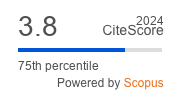Commentary | Open Access
A Pattern Language Approach to Learning in Planning
| Views: | 3108 | | | Downloads: | 1851 |
Abstract: The aim of this commentary is to present the position that a pattern language approach facilitates, even catalyzes (comparative) learning in planning for young professionals. This position builds on literature and is supported by the research work of six MSc Urbanism graduation projects, in which the students adopted a pattern language approach. Additionally, these alumni have been asked in retrospect to evaluate their pattern language experiences for their learning. The students say their pattern languages give focus, enrich the knowledge field, are flexible, and they do not prescribe what to do, or how to make a plan. Students see and appreciate the value of the simple, yet thoughtful structure of a pattern with both visual and verbal information. Additionally, they observe that this method enables the connection between disciplines, between theory and practice, and between stakeholders, and that, potentially, it is a helpful tool for all kinds of stakeholders. They refer to the method as a tool for communication, a tool for design and analysis, and a tool for learning.
Keywords: design; learning in planning; pattern language; planning; urbanism
Published:
© Remon Rooij, Machiel van Dorst. This is an open access article distributed under the terms of the Creative Commons Attribution 4.0 license (http://creativecommons.org/licenses/by/4.0), which permits any use, distribution, and reproduction of the work without further permission provided the original author(s) and source are credited.


